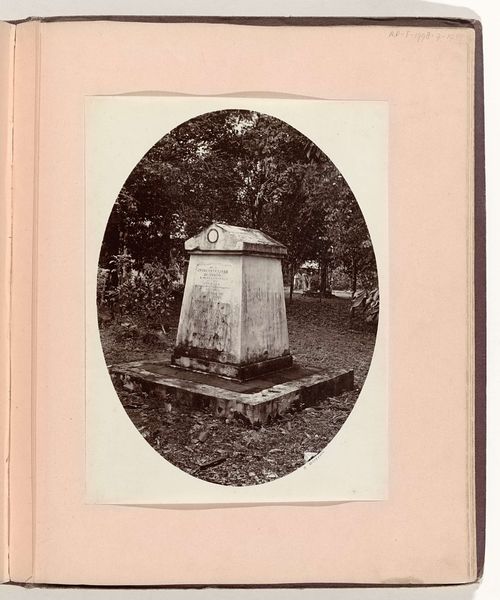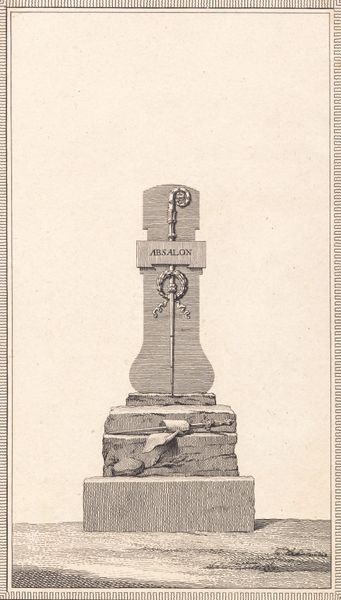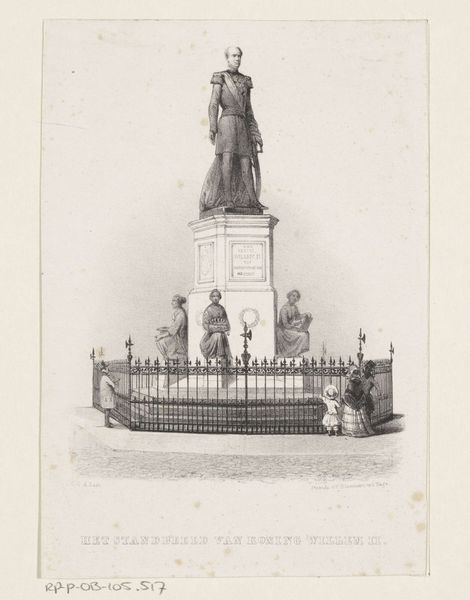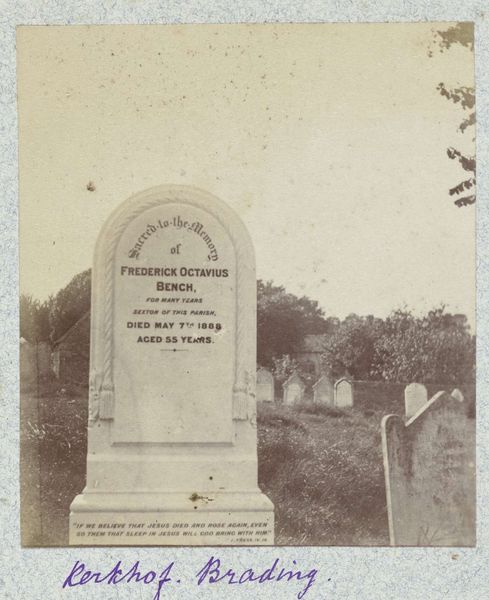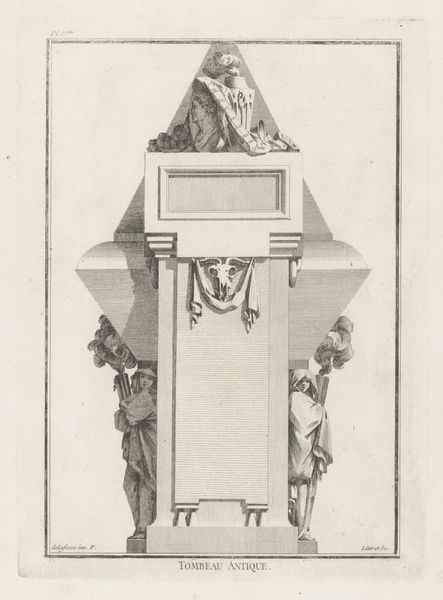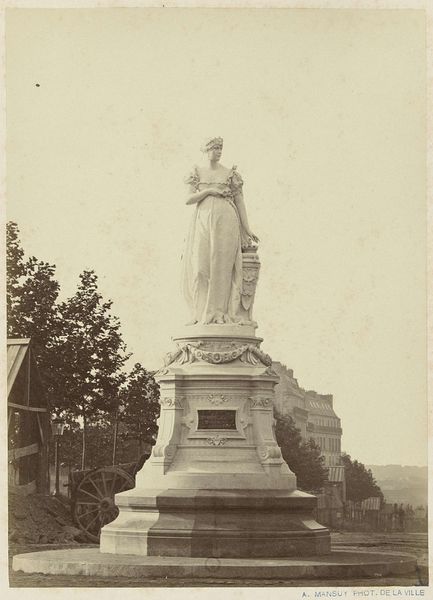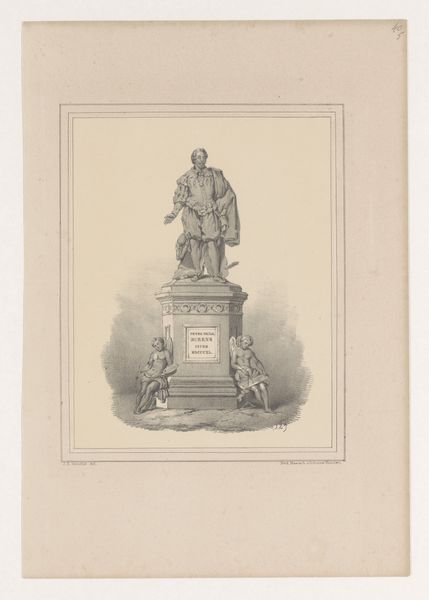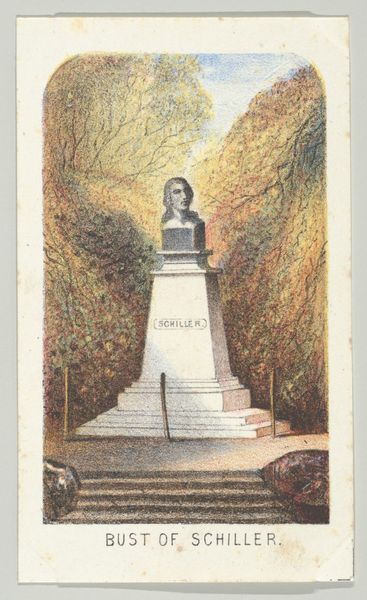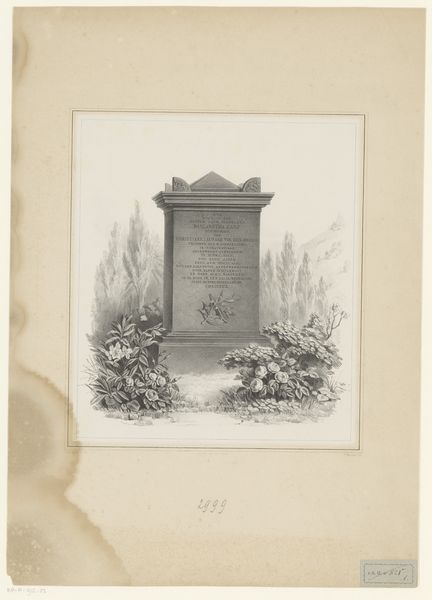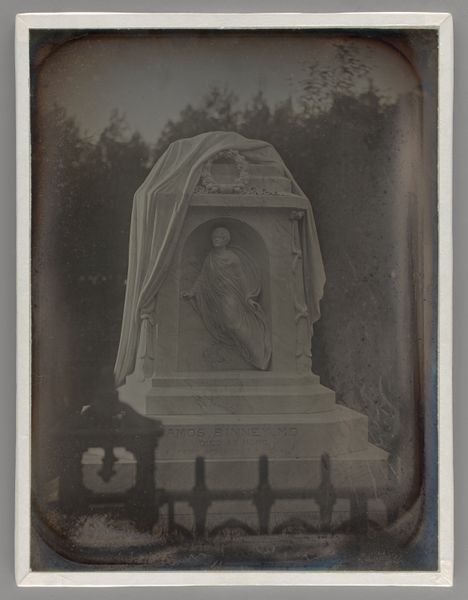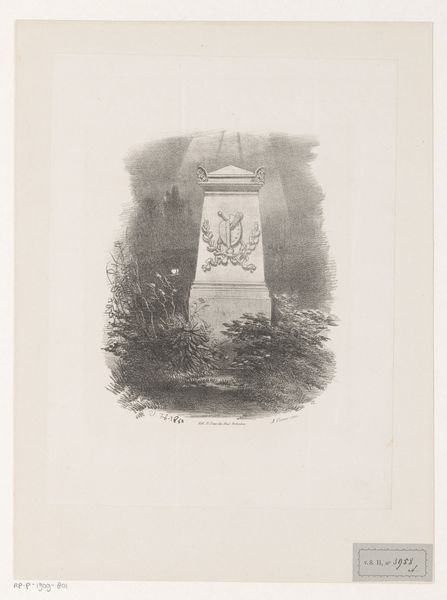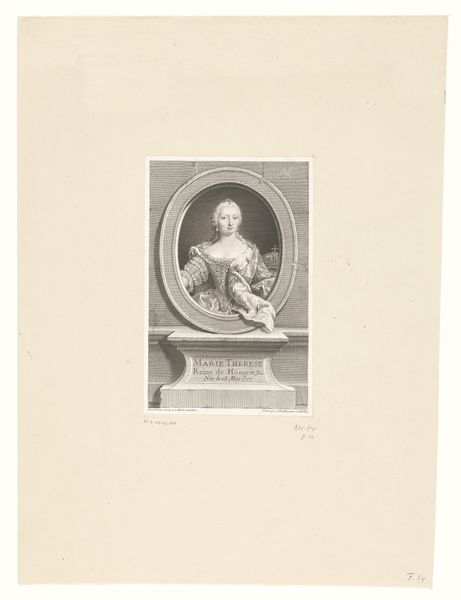
Dimensions: height 308 mm, width 223 mm
Copyright: Rijks Museum: Open Domain
Editor: This is a graphite drawing from 1869 by Johan Michaël Schmidt Crans titled "Grave Monument for Jacob van Lennep." The somber, quiet rendering of the grave marker is softened somewhat by the delicate rendering style. What does this work tell you? Curator: This piece, published in the "Album van den Nederlandsen Spectator," exists within a specific context: the rise of public monuments and commemorative imagery during a period of nation-building. It's not just about grief; it’s a political act. What do you observe about the imagery, such as the winged emblem and the portrait bust? Editor: Well, the portrait presents Jacob van Lennep in a rather classical style. And yes, that winged figure... is it a dove? A symbol of peace attached to his memorial? How does that influence the piece’s reception? Curator: Exactly! Think about it this way: after his death, representing van Lennep through neoclassicism elevated him to a figure of almost mythical importance, someone who contributed so greatly to Dutch society that his memory should be enshrined in classicized form. Is it, perhaps, manipulating the narrative through imagery to control his posthumous legacy? Editor: That’s a cynical take, but I see your point. It makes me consider who this memorial, and thus this image, were really *for*. Not just personal mourning, but for the broader public's consumption. Curator: Precisely. Art like this played a part in constructing national identity, defining who the country wanted its heroes to be. Does knowing that, change your perspective on its subdued aesthetic? Editor: Definitely. What felt simply sad before now feels strategic and... calculated? Interesting. Curator: And understanding such contextual clues gives us a fuller grasp of the visual strategies involved, and that art serves not just aesthetic but societal purposes.
Comments
No comments
Be the first to comment and join the conversation on the ultimate creative platform.
